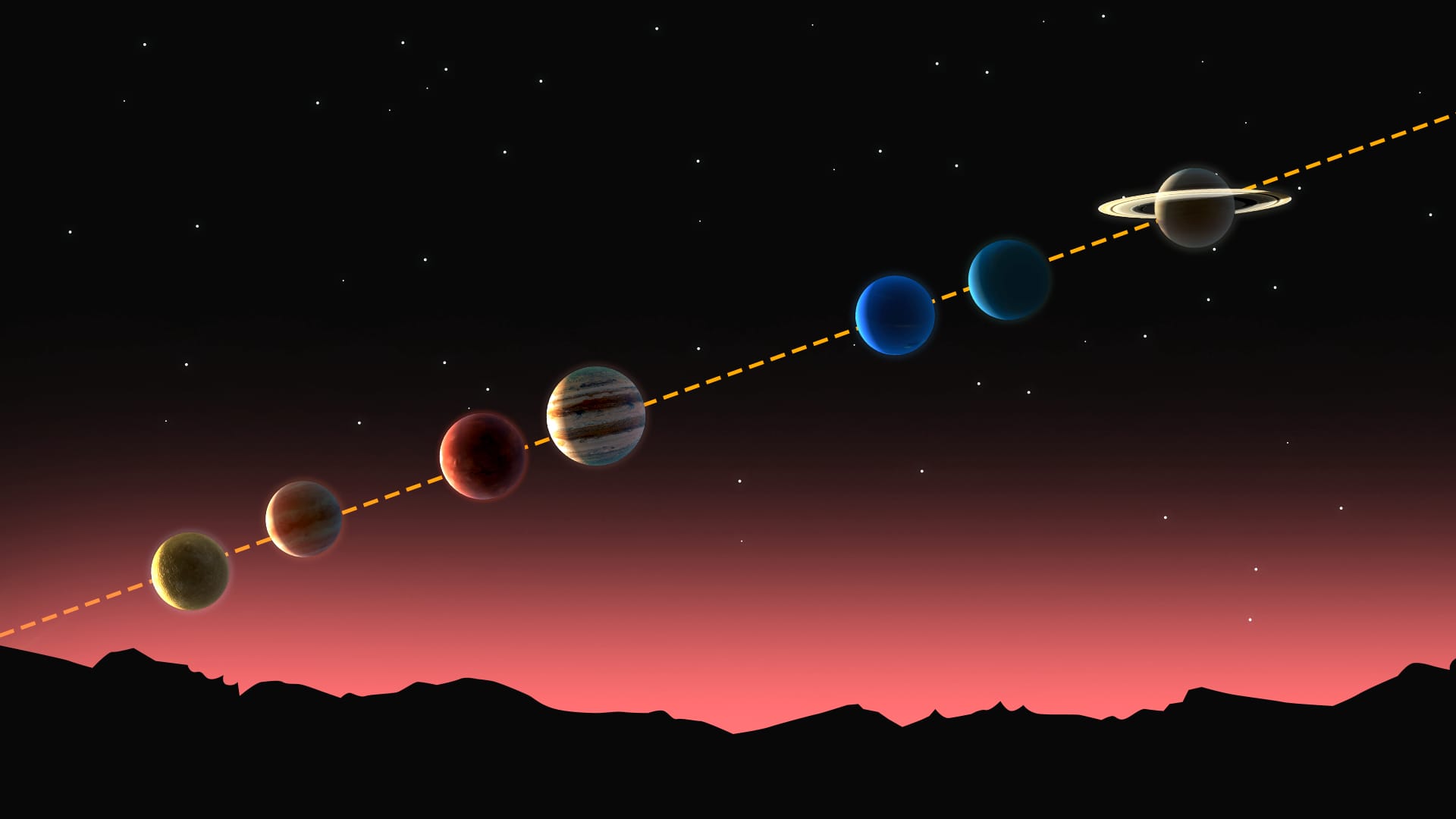Planets & Moons
There are 8 officially recognized Solar System planets: Mercury, Venus, Earth, Mars, Jupiter, Saturn, Uranus, and Neptune. Most of them, except Mercury and Venus, have their own natural satellites, commonly called “moons.” Some of the dwarf planets, like Pluto and Eris, have moons, too. Here, you’ll learn the best dates to observe planets in the sky and find everything you need to know about planets, dwarf planets, and natural satellites. When you learn enough, test your astronomy skills with our challenging quizzes!

Planetary Alignment Infographic: A Celestial Parade
Want to see six planets align in the sky? It’s happening this August! But what exactly is a planetary alignment, when to see it, and how to spot it? This colorful infographic has all the answers — let's take a look!

Bright “Star” Next to Moon: What Planet Is Near the Moon Tonight?
What is that bright dot shining near the Moon tonight? Find out about stars and planets that can be seen next to our natural satellite this month!

Facts About Jupiter: The Biggest Planet in the Solar System
Bright Jupiter is known for its enormous size, many moons, and mysterious Great Red Spot. Read our article to uncover all the secrets of the giant planet.

Christmas Sky 2025: What to Observe in the Late December Sky 2025?
Discover the best Christmas sky sights in December 2025: planets, meteors, festive constellations, and more – with easy tips for spotting them.

Neptune: The Farthest & Windiest Planet in the Solar System
How big is Neptune? What is Neptune made of? Why is Neptune blue? Read our article and learn curious facts about the outermost planet in the Solar System.

Retrograde Motion Explained: What Is Retrograde Motion in Astronomy
Discover the science of retrograde planets! Understand the mechanics of retrograde motion, its causes, and its significance in the study of astronomy and planetary behavior.

Planetary Oppositions 2025-2026: Next Up Is Jupiter!
The best time to view most planets is at the astronomical opposition. Find out what it means and when to see the upcoming oppositions.

Astronomical Conjunction of Planets 2026: When to See 2 Planets Close Together?
See two planets side by side! Discover rare planetary events in 2026. Get dates, times, and viewing tips now!

All About Mercury, The Smallest Planet In The Solar System
Explore the closest planet to the Sun! Find out how long a day on Mercury is and how many moons the planet has. Also, keep up with the upcoming Mercury events!

Planet Saturn: How to Find Saturn in the Sky in 2025?
How many rings does Saturn have? Where is Saturn tonight in the sky? Find answers to these and other most common questions about Saturn in our article.